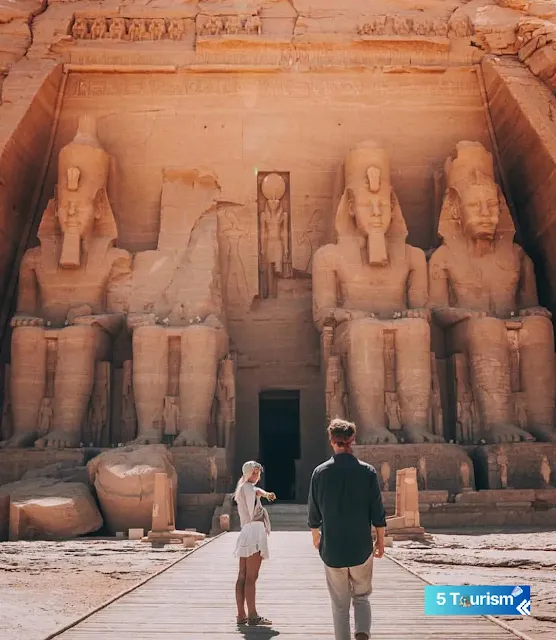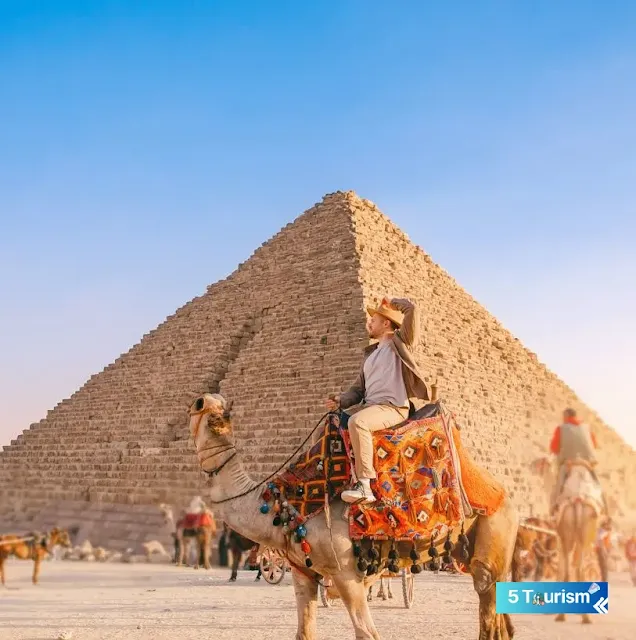Egypt: Where History Comes to Life
Egypt is considered one of the prominent tourist destinations globally, thanks to its rich Pharaonic history and unique cultural landmarks. Here is some information about some of the major Pharaonic landmarks in Egypt:
The Pyramids: The pyramids in Giza, such as the Khufu Pyramid and the Khafre Pyramid, are among the most significant tourist attractions globally. The Great Pyramid (Khufu) is one of the Seven Wonders of the Ancient World.
The Sphinx: A massive statue depicting a human face and a lion's body, it is part of the complex of the pyramids in Giza.
Valley of the Kings: Located in Luxor, it contains the famous tombs of the pharaohs, such as the tomb of Tutankhamun.
Luxor and Karnak Temples: A complex of massive temples in the city of Luxor, considered one of the most important archaeological sites in Egypt.
The Egyptian Museum: Located in Cairo, it houses a vast collection of Pharaonic artifacts and arts.
Temple of Philae: Located in Aswan, it is considered an important monument of Pharaonic architecture.
These landmarks embody the richness of Egyptian history and serve as a major attraction for tourists from around the world who come to explore and learn about the ancient Pharaonic civilization.
Great Pyramid of Khufu (The Great Pyramid):
The Great Pyramid of Khufu is considered the largest pyramid in Giza and the largest pyramid in Egypt.
~1.webp) |
| Great Pyramid of Khufu (The Great Pyramid) |
It is one of the Seven Wonders of the Ancient World and is regarded as a remarkable engineering achievement.
Standing at approximately 146.6 meters (481 feet), it was considered the tallest man-made structure in the world until the construction of the Leaning Tower of Pisa in the fourteenth century.
Khafre Pyramid:
Located next to the Great Pyramid of Khufu, the Khafre Pyramid is the second-largest pyramid in size.
It is a prominent tourist attraction and is part of the pyramid complex in Giza.
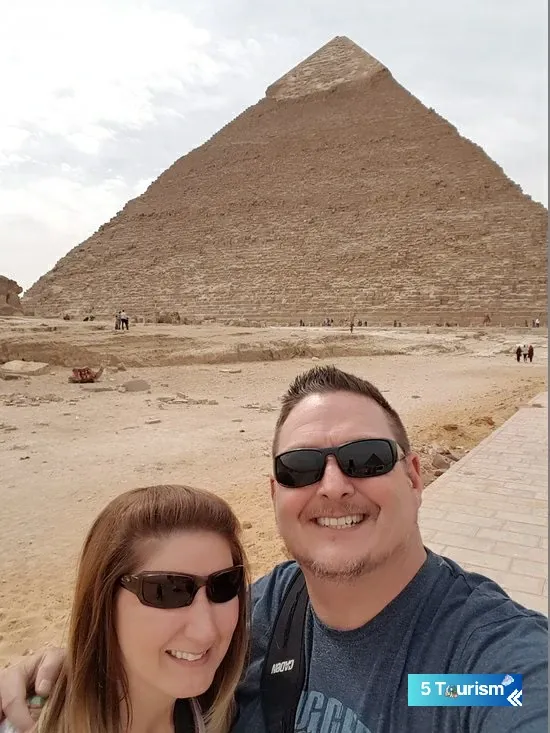 |
| Khafre Pyramid |
Menkaura Pyramid:
Situated southwest of the Great Pyramid of Khufu, the Menkaura Pyramid is the third-largest pyramid in size.
It is characterized by the stepped burial chamber in the inner floor.
 |
| Menkaura Pyramid |
Small Pyramids:
Alongside the major pyramids, there are several smaller pyramids for kings and queens.
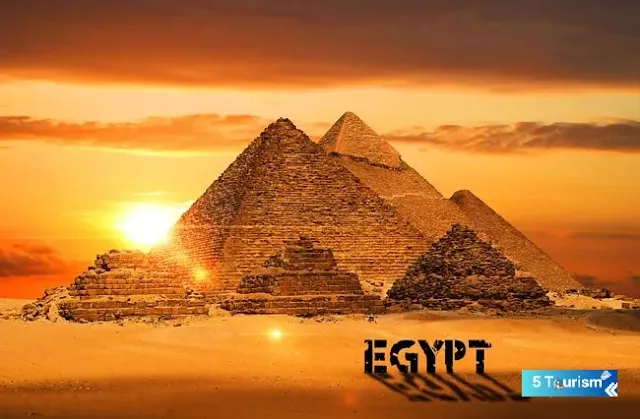 |
| smaller pyramids |
Construction Process:
The pyramids were built by paid laborers, not slaves, and involved the participation of thousands of craftsmen and workers.
The pyramids were constructed using massive stones quarried from nearby quarries.
Pyramids as Tombs:
The pyramids served as tombs for ancient Egyptian pharaohs, containing passages and chambers for the burial of kings, royal families, and treasures.
Preservation of the Pyramids:
Scientists and experts contribute to preserving the pyramids by utilizing modern technology to monitor their condition and address potential challenges.
Tourist Attraction:
The pyramids are a major tourist attraction, drawing visitors from around the world to explore these colossal structures and learn about the ancient history of Egypt.
The Sphinx:
Part of the Giza pyramid complex.
Depicts a massive statue with the body of a lion and a human face.
Represents the engineering wonders as the statue is carved from a single piece of rock.
The face of the statue is believed to represent Pharaoh Khafra, symbolizing the power and pharaonic authority.
Valley of the Kings:
Located in Luxor, a site for the tombs of ancient Egyptian pharaohs.
Contains many famous tombs, including the tomb of Tutankhamun, where its contents, including pharaonic treasures, were discovered.
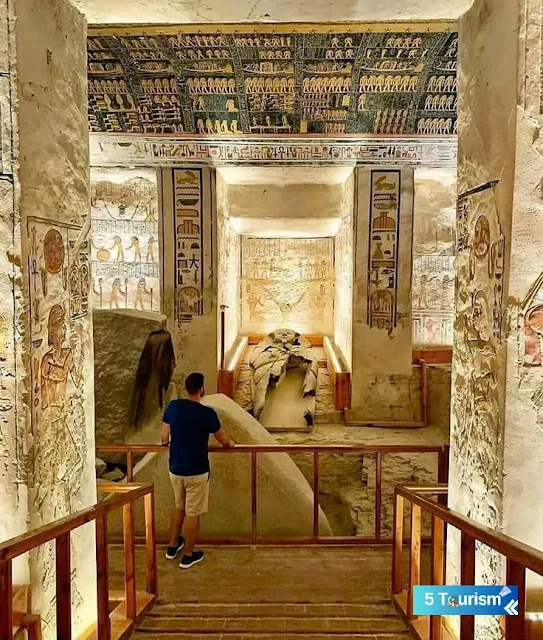 |
| Valley of the Kings |
.webp) |
| Valley of the Kings |
Temples of Luxor and Karnak:
Form a complex of massive temples in the city of Luxor.
Considered an important archaeological site in Egypt, featuring huge structures and columns engraved with hieroglyphs.
 |
| Karnak |
Demonstrates the advanced techniques used by the pharaohs in building their magnificent temples.
The Egyptian Museum:
Located in Cairo, it houses a vast collection of pharaonic artifacts and arts.
Includes many unique archaeological pieces such as statues, vessels, and burial furniture.
A significant place for understanding the history and culture of ancient Egypt.
 | ||
| The Egyptian Museum |
Temple of Philae:
Located in Aswan, considered an important monument of pharaonic architecture.
Transferred to Agilkia Island due to the construction of the High Dam, and reassembled there.
Distinguished by engravings and a magnificent structure reflecting the engineering genius of ancient Egyptians.
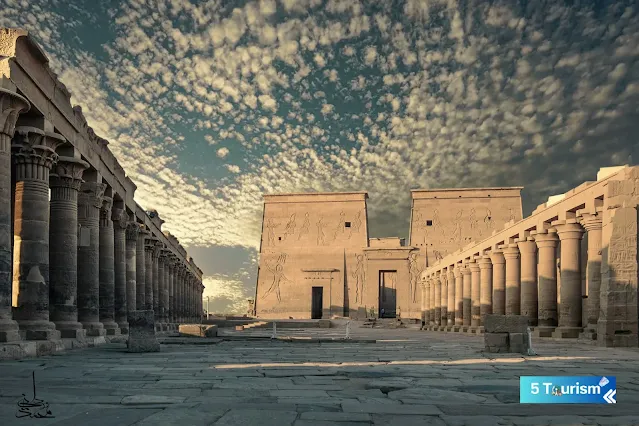 |
| Temple of Philae |
These landmarks embody the cultural and historical richness of Egypt, attracting tourists and history enthusiasts from around the world who come to explore the beauty and technology of ancient Pharaonic civilization.

